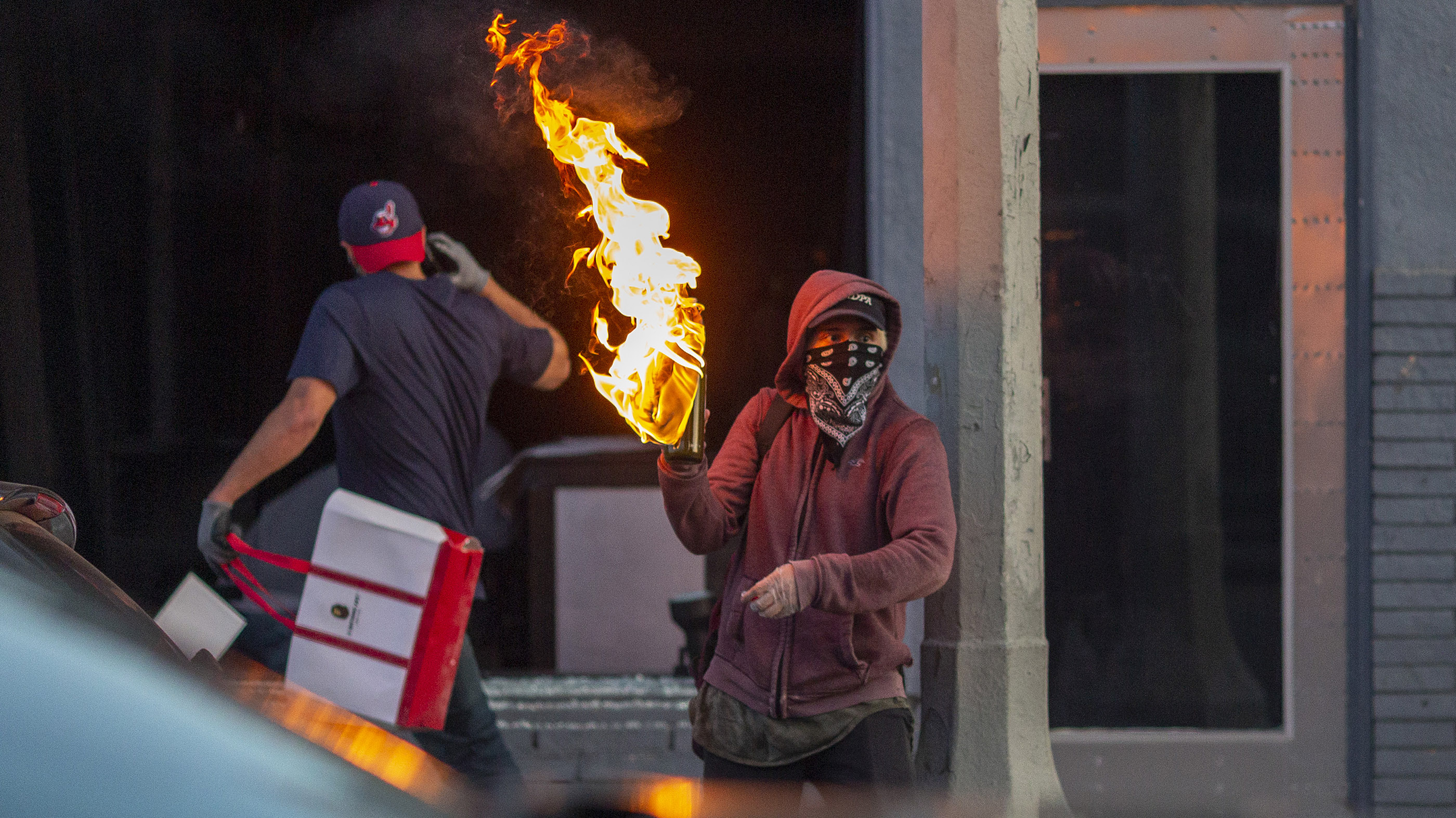How did 'Molotov cocktails' get their name?
Here's a look at the history of Molotov cocktails, including what they are and how they were named.

Molotov cocktails — improvised, handheld firebombs — are emblematic of civil unrest and revolution. Cheap, lightweight and easily concealed, they are probably the most lethal weapon that can be made quickly from easily available ingredients; and so "Molotovs" have been wielded by irregular combatants for almost 100 years, from their first recorded use in the Spanish Civil War up until recent conflicts, including the 2022 Russian invasion of Ukraine.
Molotov cocktails take their name from the Russian politician Vyacheslav Molotov, who was the foreign minister of the Soviet Union during World War II. According to the American historian William Trotter, the phrase comes from Finnish, where it is "Molotovin koktaili."
Molotov was one of the signatories to the infamous Molotov-Ribbentrop pact in August 1939. The pact was ostensibly a non-aggression treaty between the Soviet Union under Joseph Stalin and Nazi Germany under Adolf Hitler; but the two powers also secretly agreed to divide Europe into Soviet and German spheres of conquest. Finland, formerly a part of Sweden and which had resisted its absorption into Russia for more than a century, fell into the Soviet sphere.
The Soviet Union invaded Finland on Nov. 30, 1939, just a few months after the German and Soviet invasions of Poland — a conflict called the "Winter War." But Molotov claimed on state radio that the Soviet bombers were dropping not bombs, but humanitarian food supplies to their starving neighbors, according to Trotter. So the Finns sarcastically dubbed the bombs "Molotov picnic baskets," and later followed suit by calling their improvised firebombs "Molotov cocktails," Trotter said.
Trotter said that the Molotov cocktails thrown by the Finns were especially effective against the invaders because the early Soviet tanks were fueled by gasoline — which easily catches fire — and not, like most modern tanks, by diesel, which is not as flammable.
History of Molotov cocktails
Although Molotov cocktails take their name from the Finnish-Soviet Winter War, their history is older than that — going back to at least the Spanish Civil War from 1936 to early 1939.
Molotov cocktails, Trotter explained, were used by Spanish Nationalist soldiers against Soviet tanks supporting the Spanish Republicans at the Battle of Seseña in 1936; and Tom Wintringham, an English volunteer for the International Brigades — military units who fought for Republican forces during that civil war — said they were also used by Republicans against Nationalist tanks.
Wintringham told Picture Post magazine in 1940 that combatants took glass jars filled with "petrol" — gasoline — and covered them with pieces of a blanket or curtain; after dousing the covering cloth with the fuel and setting fire to it, they would throw it in front of a tank.
Related: The 22 weirdest military weapons
"The blanket should catch in the tracks or in a cogwheel, or wind itself round an axle," Wintringham said. "The bottle will smash, but the petrol should soak the blanket well enough to make a really healthy fire, which will burn the rubber wheels on which the tank tracks run, set fire to the carburetor, or frizzle the crew."
"Do not play with these things," he added. "They are highly dangerous."
Modern use

The British early in World War II also used improvised handheld firebombs when Britain feared a German invasion.
According to a 1943 history of the British Home Guard by Charles Graves, its head Gen. Edmund Ironside in June 1940 described "Molotov cocktails" as "this thing they developed in Finland … a bottle filled with resin, petrol, or tar, which if thrown on top of a tank will ignite." A few months later, the British War Office had produced instructions for their creation and use by the Home Guard.
In the later stages of the war, soldiers replaced the rudimentary burning wick with other substances that burst into flame upon impact, such as the white phosphorus used in the British No.76 Grenade, according to the ww2db.com website; or the mixture of sulfuric acid, potassium chlorate and sugar developed by the Polish resistance movement, chemistry expert Anne Marie Helmenstine, wrote on ThoughtCo.
But the original rudimentary version is still around. Molotov cocktails have frequently been wielded in bouts of unrest in the United States, including during the 1992 riots in Los Angeles, reports The New York Times, and in the nationwide 2020 riots after the death of George Floyd, reports ABC News; several of those cases resulted in felony convictions.
Perhaps thankfully, versions of Molotov cocktails that don't ignite at all have also been developed. Most famously "puputovs" — glass jars filled with human excrement, and a play on the word Molotov — were used against government officials, police and soldiers by rioters during political protests in Venezuela in 2017, according to the Argentinian newspaper La Nacion.
Additional resources
—Read more about the German-Soviet Nonaggression Pact, including the involvement of Soviet foreign minister Vyacheslav Molotov, at The History Channel.
—This Wilson Center page provides more about the history of Vyacheslav Molotov, the Soviet Minister of Foreign Affairs.
—The Wilson Center also provides more history and details on Molotov's Proposal that the USSR Join NATO in March 1954.
Editor's note: This article was updated to indicate the International Brigades fought for Republican forces, not Nationalist.
Sign up for the Live Science daily newsletter now
Get the world’s most fascinating discoveries delivered straight to your inbox.
Tom Metcalfe is a freelance journalist and regular Live Science contributor who is based in London in the United Kingdom. Tom writes mainly about science, space, archaeology, the Earth and the oceans. He has also written for the BBC, NBC News, National Geographic, Scientific American, Air & Space, and many others.










